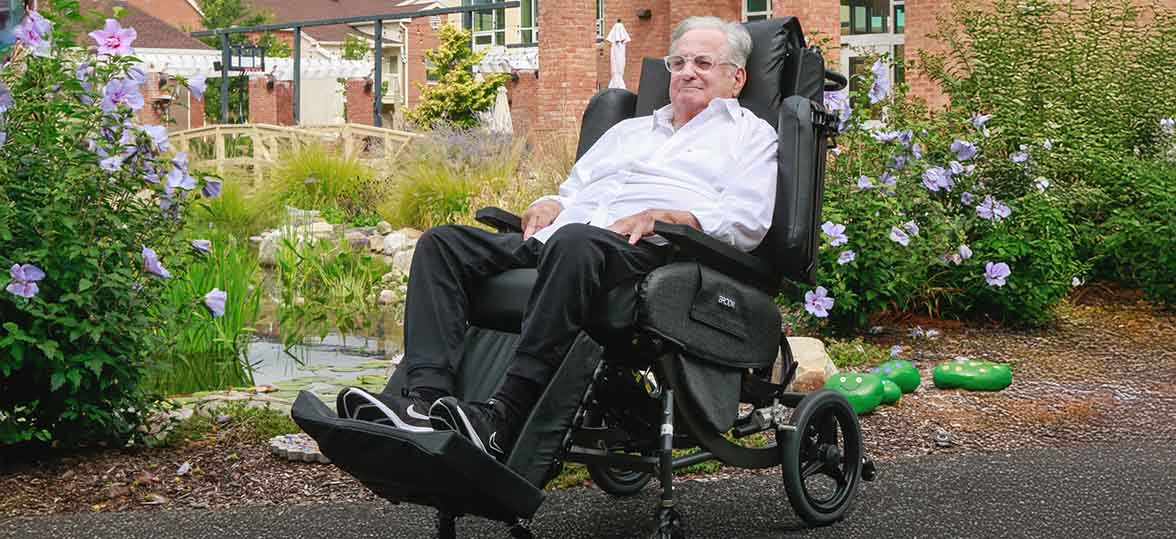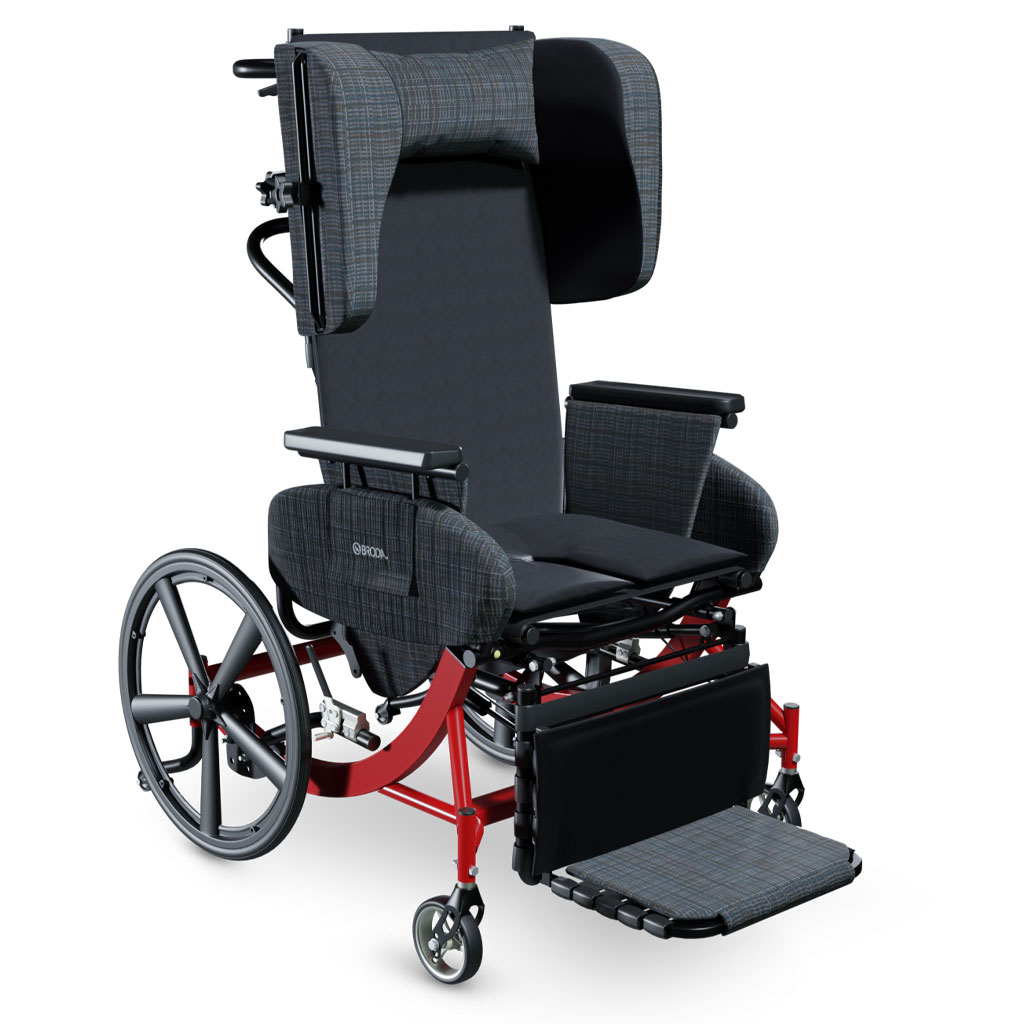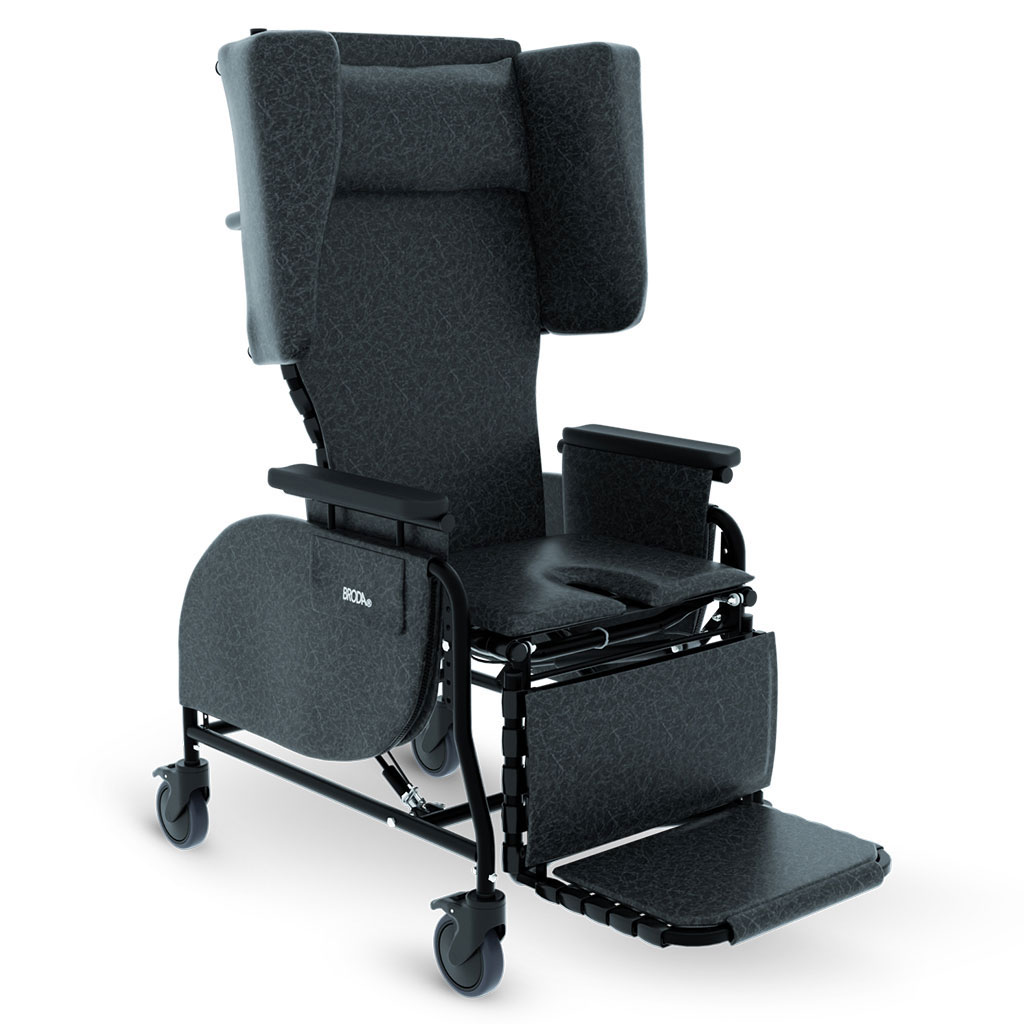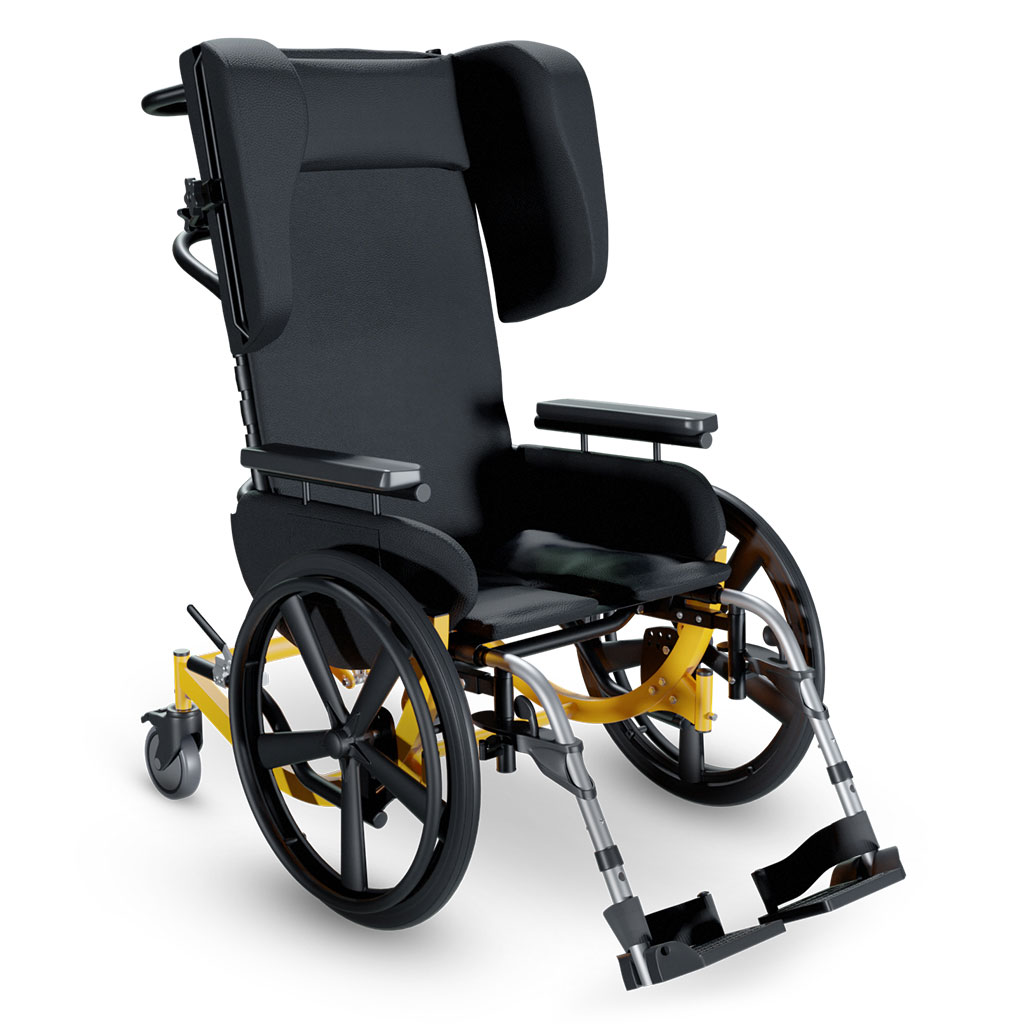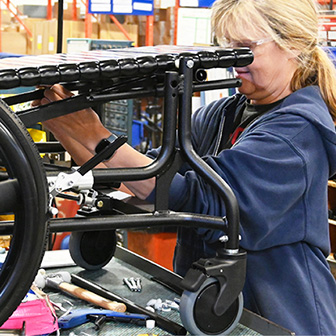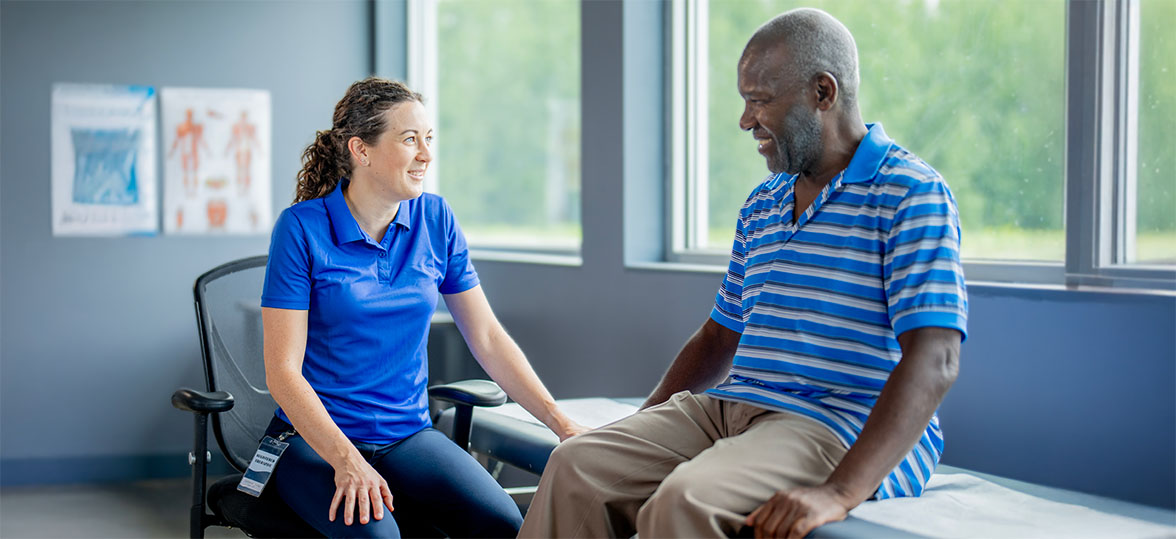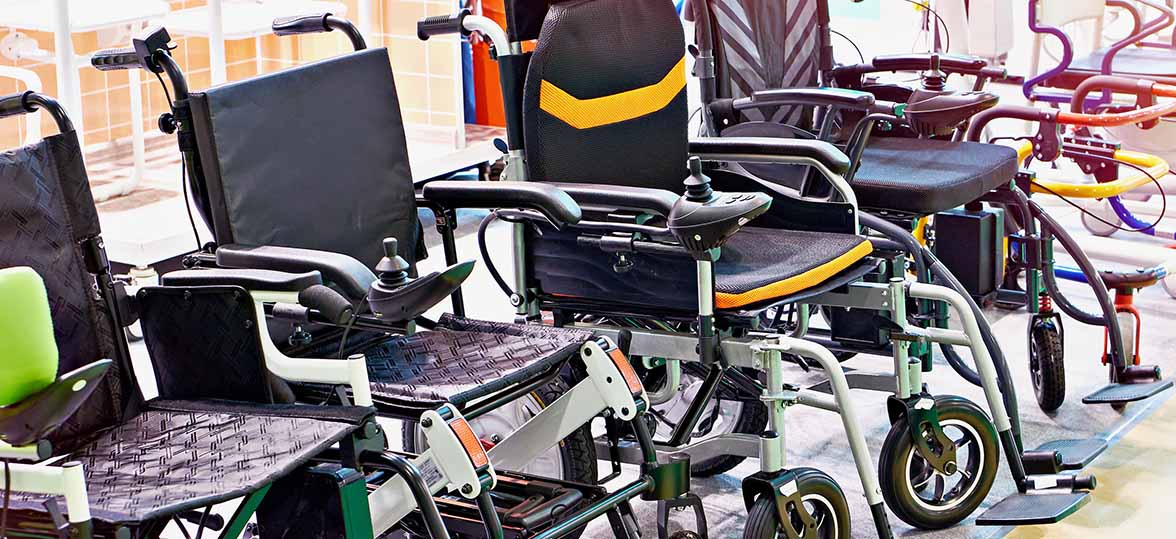When it comes to selecting a wheelchair for patients 6 feet and taller, there’s no one-size-fits-all solution. Proper measurement, fitting, and thoughtful wheelchair features are especially critical for taller individuals to ensure comfort, safety, and mobility. This guide breaks the process into easy-to-follow steps and highlights key considerations and product recommendations to meet the unique needs of taller patients.
Broda specializes in innovative wheelchairs like the Synthesis Positioning Wheelchair, Midline Positioning Wheelchair, and Encore Pedal Wheelchair, making it easier to find the perfect fit for taller clients. Here’s how you can make your patients’ experience as seamless and supportive as possible.
Why Tall Patients Face Unique Wheelchair Challenges
Patients over 6 feet tall encounter distinct problems when using standard wheelchairs. Without proper adjustments, they may experience discomfort and even long-term harm, including:
- Legs bottoming out: Short or improperly set leg rests lead to pressure on the heels or awkward leg positions.
- Insufficient back height: A low backrest places extra strain on the scapula, while inadequate head support can leave taller patients without proper alignment.
- Knee-to-heel mismatch: Many standard wheelchairs fail to accommodate longer knee-to-heel lengths, leading to unnecessary pressure and discomfort. Notably, 34.1% of pressure injuries reported in long-term care occur on the heels.
- Seat-to-Floor Height Too Low: Without the right seat height, taller patients may experience awkward postures and difficulty transferring. A seat to floor height that is too low can cause several issues with positioning and comfort.
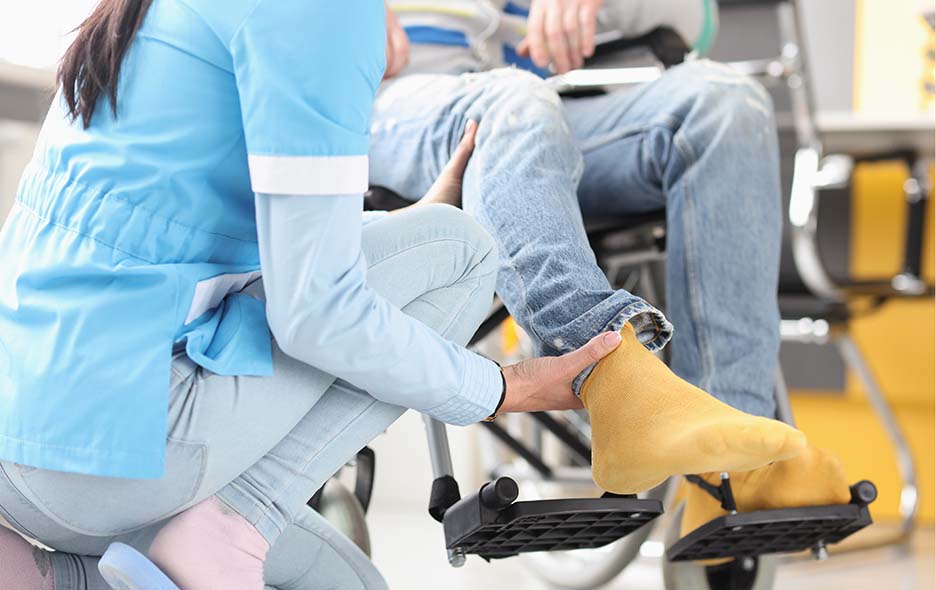
Step 1: Taking Crucial Measurements
Accurate measurements are the foundation of a well-fitting wheelchair. Use these guidelines to capture precise details for taller individuals:
- Seat-to-Floor Height: Consider the addition of cushions, as they can significantly impact seat-to-floor height. A cushion can add several inches to a seat height measurement, so don’t forget to factor in that extra height.
- Back Height: Proper back support reduces strain and improves posture. For taller individuals, the backrest height should extend above the scapula. Options like the Synthesis Positioning Wheelchair offer extended back heights up to 35″ for optimal support and comfort.
- Knee-to-Heel Length: Measure from the back of the popliteal to the bottom of the foot. Be sure to take the client’s shoes into consideration. If your client regularly wears shoes, the thickness of the sole will affect knee-to-heel length. Ensuring that the footrest is the proper length avoids pressure on the heels and lets the patient rest their feet comfortably. Broda offers footrests with extension tubes and accommodates knee-to-heel lengths from 18″-25″ to address this need.
Risks of Improper Measurement
If the measurements are incorrect, even slightly, the wheelchair may cause issues instead of solving them. Here are some of the common errors that come with an incorrect measurement.
Pelvic Misalignment
If the seat-to-floor height is too low, it can cause the pelvis to tilt backward. This compromises spinal alignment and leads to discomfort. Prolonged spinal misalignment can even lead to long-term musculoskeletal issues.
Incorrect Leg Angle
If the client’s knees are positioned higher than the hips, it alters the natural leg angle. This increases pressure on the pelvis, creating a pressure injury risk. An incorrect leg angle also reduces stability, leading to a fall risk.
Incorrect Foot Placement
Taller individuals may instinctively adjust their posture to maintain proper foot placement, but this can result in shifting or sliding in the seat. This constant repositioning can lead to discomfort or pressure sores over time.
Sliding Risk
Poor alignment and discomfort can encourage shifting or sliding in the seat as individuals seek a comfortable position. This can lead to unsafe seating posture or even falls in certain contexts.
These challenges can impact everything from dining (difficulty fitting under tables) to mobility (ineffective transportation adjustments). Addressing these concerns early ensures comfort and promotes well-being during daily activities.
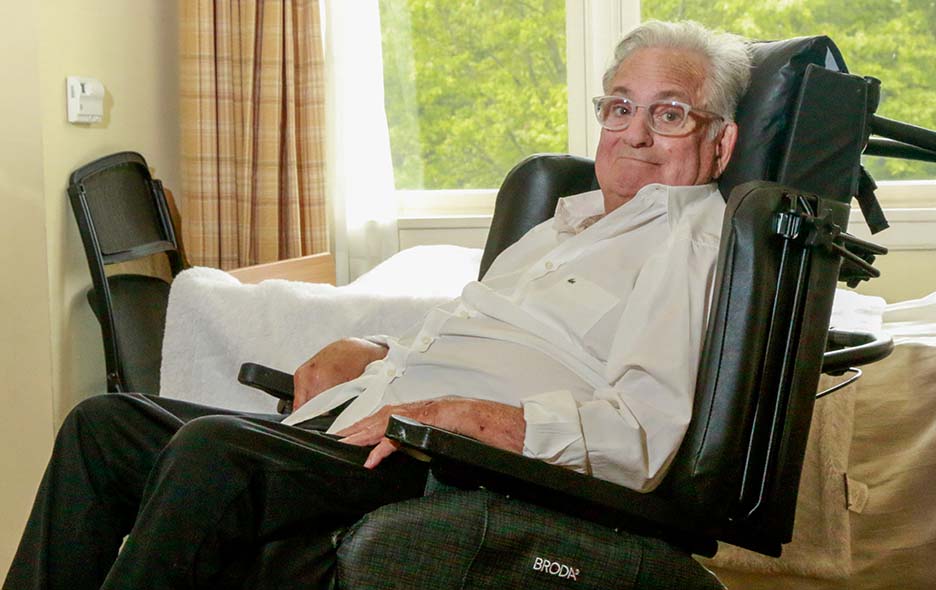
Step 2: Understanding the Full Picture of the Patient’s Needs
Beyond measurements, clinicians should consider factors that influence wheelchair selection, such as:
- Body Composition: Is the patient’s height due to longer legs or a longer torso? For patients with a longer trunk, backrest adjustability is critical. For leg-dominant patients, prioritize extended seat height and longer footrests.
- Diagnosis and Prognosis: Choose a wheelchair that evolves with the patient’s needs as their condition progresses. For example, the Broda Midline Positioning Wheelchair combines self-propulsion with positioning features for versatility over time.
- Daily Activities: Consider where the wheelchair will be used most frequently, such as dining areas (to fit under tables) or transportation vehicles (to meet clearance requirements).
Step 3: Choosing the Right Wheelchair Model
Broda offers several wheelchairs tailored to taller patients, each designed with a specific set of features to provide support and comfort.
*May vary by desired wheelchair configuration. For additional details, please refer to the appropriate order form.
Other Wheelchair Accessories for Tall People
Step 4: Planning for Comfort and Mobility
For any wheelchair, comfort should be paired with versatility. Broda’s Comfort Tension Seating (CTS) system enhances pressure relief and airflow across the seat, back, calves, and heels. Easy-to-clean designs and adjustable components make long-term use more practical for both patients and caregivers.
Step 5: Simplifying the Ordering Process
When you’re ready to place an order:
- Double-check the measurements you’ve taken for backrest height, seat surface height, and knee-to-heel length to ensure all components are adjusted to fit perfectly.
- Invite a Broda representative to help with measurements and clinical applications. The Broda team are experts in wheelchair measurement and will ensure the perfect device and the perfect fit – the first time.
- Add any necessary accessories, such as extended arm supports or customized cushions.
- Use Broda’s order forms to specify additional customization options, like lateral shoulder bolsters or fabric preferences.
If you’re unsure about which wheelchair meets your patient’s needs, Broda’s support team is always available to guide you through the selection process.

Step 6: Educating Patients and Caregivers
Finally, empower your patients and their caregivers by explaining the benefits of their chosen wheelchair and how to adjust its components for maximum comfort. Highlight key features like reclining mechanisms, tilt adjustments, and transport compatibility.
Broda Wheelchairs Designed for All Heights
For patients over 6 feet tall, customized wheelchairs can significantly improve daily mobility and long-term comfort. Broda’s specialized options, like the Synthesis Positioning Wheelchair and Midline Positioning Wheelchair, offer the ideal blend of adaptability, functionality, and support for taller individuals.
To learn more or request a quote, contact Broda today. Together, we can ensure your patients experience unmatched comfort and care, no matter their height.
Call Broda for a Personalized Measurement
A local Broda representative would be happy to come to your location. With a personalized measurement, we can ensure the ideal fit for any individual’s height and body type. This is especially important for taller patients who often struggle with finding wheelchairs that accommodate their unique needs.
Don’t let height hinder your patient’s daily activities and quality of life. Call Broda today for the perfect combination of fit and function.
References
- Sugathapala, R. D. U. P., Latimer, S., Balasuriya, A., Chaboyer, W., Thalib, L., & Gillespie, B. M. (2023). Prevalence and incidence of pressure injuries among older people living in nursing homes: A systematic review and meta-analysis. International Journal of Nursing Studies, 148, 104605. https://doi.org/10.1016/j.ijnurstu.2023.104605
